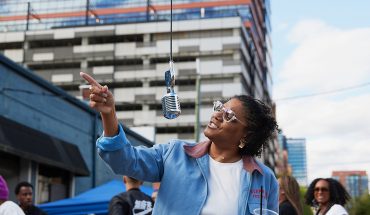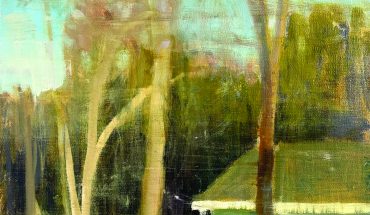by Larry Wheeler
Director, North Carolina Museum of Art
Europe. That mass of civilizing geography, which lures us to its oldness and its coolness, seems to work a special magic during the rites of spring, summer, and fall.
Spring, and the call to travel, came early to me and the museum this year as The European Fine Art Fair, the grandest and most important Old Master annual art fair in the world, opened in Maastricht, in the southeastern corner of the Netherlands, on March 14. As Dennis Weller, the distinguished curator of Dutch and Flemish art at the NCMA, was attending and always does, it seemed I should tag along and encourage his acquisitive eye. This jaunt would open, as well, the opportunity to visit the Porsche Museum folks in Stuttgart in advance of NCMA’s major exhibition on Porsches and the history of their design this fall.
The huge convention center in the charming, historic city of Maastricht was filled with the most exceptional and exquisite objects, Old Master paintings, drawings, and sculpture that the art market can produce. And flowers. Arrangements of tulips and spring flowers towered everywhere, amid 12-foot-tall walls of roses. Breathtaking.
Weller and Pam Fowler, a collector from Wilmington, enthusiastically led me to their choices for the museum. (It is likely one of their favorites will soon enter the NCMA collection.) That evening we dined at the Kruisheren Hotel’s superb restaurant, installed with fantastic contemporary chandeliers and art, in the nave of a 15th-Century cloister. If you are in Maastricht, go there.
A group of us caught the morning train to Amsterdam: my great friend Kaywin Feldman, director of the Minneapolis Institute of Arts; her husband, Jim Lutz; Don Doskey and I took the two-hour ride. We alighted at the Dylan Hotel on the Keizersgracht, the second canal among several concentric canals embracing the city. The hotel was stylish, comfortable, most hospitable, and perfectly situated for walking to the museums in one direction and the historic city (including the red-light district, clearly marked on maps) in the other. Amsterdam looked fantastic.
The “Bathtub” – as the new addition to the Stedelijk Museum is called, derisively, because of its resemblance to a huge, inverted porcelain bathtub – contained major works of modern and contemporary art. I must say, however, that the NCMA’s collection of art from the same era stands tall by comparison.
We dined at some very chic and some very old places. The Vijn bar close to our hotel was the perfect lively stop before going next door for a tapas-style dinner at Envy, a popular reservation for cool locals. One should not miss lunch or dinner at the Blue Spoon in the Andaz Hotel, a destination for exciting, cutting-edge hotel and restaurant design. D’Vijff Flieghen (The Five Flies) is an essential dinner. It is old and famous, and the food is good. The restaurant at the Dylan is also excellent.
For all of us who are now so conversant about Rembrandt – thanks to NCMA’s extensive 2011 exhibit of his works – a visit to the Rembrandt House is essential. I felt the spirit of the man at the height of his power as I explored his living quarters and studios, remembering all the while that this was the house he eventually lost in bankruptcy when his fortunes took a downturn.
Porsche Museum
A short flight to Stuttgart brought us to the hospitality of the Porsche Museum. An excellent tour of the impressive new building and galleries at Porsche headquarters inspired us to imagine the installation and interpretation possibilities for our show this fall. Dieter Landenberger and Rolf and Bärbel Sprenger, with whom we dined at Restaurant Wielandshöhe (very good with a beautiful view of Stuttgart), promised the full partnership of the Porsche Museum in making our exhibition exceptional.
Paris awaited. Always. Three days is never enough, of course, so one walks endlessly among its splendors and remarkable vistas, hoping for a refilling of the soul. We stayed at the Hôtel Duc de St. Simon, just off Rue du Bac and Boulevard St. Germain, a great location for blue-chip meandering.
The Musée d’Orsay, close by, was showing an exhibition on “dark romanticism,” 19th Century paintings full of ghosts, goblins, vampires, and unsavory night crawlers. Naturally, we also made time for the fantastic Impressionist galleries filled with Monet, Manet, Cézanne, Renoir, Degas, and the whole gang. It is worth noting that right now you can experience the best of Paris at the NCMA. Not only can you visit Monets, but also some remarkable 19th-Century paintings on loan from the Chrysler Museum in Norfolk. The Renoir and Degas masterpieces alone are worth a special visit.
Lunch at Restaurant Voltaire near the D’Orsay always puts one in touch with the traditional Paris – in proximity to the famous people who dine there. The grilled daurade is incroyable. After a two-hour lunch, one may amble across the river to the Louvre to explore, I hope, the new Islamic pavilion, and some great Italian pictures that will remind one of similar masterworks back home at the NCMA.
My U.S. friends, principally Joyce Fitzpatrick, insisted we dine at Spring, a new cool place impossible to book. The concierge gave us an emphatic non. But after I texted Joyce, she coerced her friend Dennis Mayfield, a friend of Spring’s chef, to call Paris and find us a 7 p.m. reservation. The fantastic culinary experience was well worth the arm-twisting.
It was a treat, as well, to have dinner at Le Dome with our old friend Frank Schork, the much sought-after guide to Versailles. He has the keys. His tour is the most entertaining one could hope for.
We traveled by Chunnel train to London on Saturday, a leisurely two hours. London was freezing. Staying at a Radisson Blu on Leicester Square, we were a short walk from the National Gallery and the National Portrait Gallery, where we saw the new and controversial portrait of Catherine, the Duchess of Cambridge. I liked it. An exhibition of Man Ray photographs titillated us for a good hour before we sat down to a typical pub lunch. Dinner at J. Sheekey in the theatre district has become a tradition. The excellent fish and the very nice professional staff made for a happy last night.
The morning plane to Raleigh had us home for supper, inspired by what we’d seen, and excited about the various European connections to our own museum.




